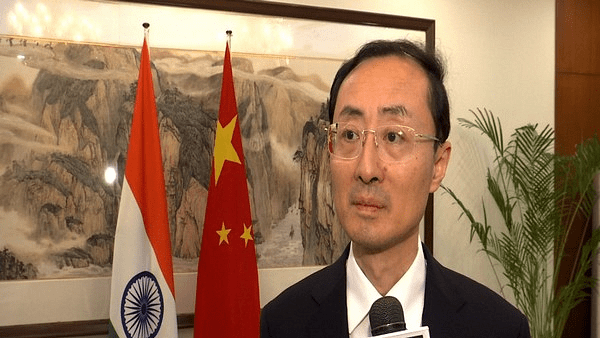
China’s Ambassador to India Sun Weidong on Thursday said that the recent incident at the Line of Actual Control was completely instigated by the Indian side and the responsibility does not lie with the Chinese side.
In an interview with the Government-run news agency of India “Press Trust of India”, Weidong said: “The incident happened on the Chinese side of the Line of Actual Control (LAC), and the Indian side crossed the LAC first.”
The Ambassador said that the Galwan Valley is located on the Chinese side of the LAC, where the ground situation of control and management is very clear. The two sides basically have kept peace for decades. However, since the beginning of this year, the Indian side has continuously built facilities at or crossing the LAC in the Galwan Valley, constantly changing the status quo of ground control.
“On May 6, the Indian border troops crossed the LAC in the Galwan Valley by night and trespassed into China’s territory. They resorted to violent means to create a standoff between the two sides and built infrastructures in an attempt to maintain a permanent presence.”
He said that the Indian side violated the consensus and started provocation which led to escalation of the situation. “Since the beginning of the standoff in early May, the Chinese side has lodged representations on multiple occasions to the Indian side through military and diplomatic channels. The Indian side agreed to withdraw the personnel who crossed the LAC and demolish the facilities, and so they did.

On June 6, the border troops of both countries held a commander-level meeting. The Indian side promised that they would not cross the estuary of the Galwan river to patrol and build facilities, and the two sides agreed to build observation posts on either side of the Galwan river mouth. However, after the commander-level meeting, when the situation on the ground was already easing, the Indian border troops copped out on the consensus reached at the commander-level meeting, demanded that China dismantle its observation post, and once again crossed the line for provocations, which triggered the conflict.”
“The Indian side started the fight and violently attacked Chinese people. On the evening of June 15, the Indian border troops violated the consensus reached at the commander-level meeting and crossed the LAC once again to dismantle Chinese tent. The Chinese side went for negotiation as they used to do while handling border incidents. However, the Indian army suddenly and violently attacked the Chinese officers and soldiers who went for negotiation, causing fierce physical conflicts and casualties between the two sides.”
“The Indian side violated a series of agreements reached between the two countries. China and India have agreements and protocol to follow in maintaining peace and tranquility in the border areas. The Article One of the Agreement on the Maintainance of Peace and Tranquility Along the Line of Actual Control in the China-India Border Areas in 1993 and Article Two of the Agreement on Confidence Building Measures in the Military Field Along the Line of Actual Control in the China-India Border Areas between the two governments in 1996 clearly stipulate the activities of the two sides near the LAC. Actions taken by the Indian side are not in consonance with the spirit of above mentioned agreements.”
Asked if the current dispute can be resolved, the Ambassador said that the merits of this incident is very clear. “The onus is not on China. The Indian side crossed the LAC for provocation and attacked the Chinese border troops. The Indian forces seriously violated agreements on border issues between the two countries and severely violated basic norms governing international relations. We urge the Indian side to conduct a thorough investigation, hold the violators accountable, strictly discipline the frontline troops and immediately stop all provocative acts to ensure such incidents will not occur again.”
Currently, China and India have stayed in communication through military and diplomatic channels to defuse the situation. Not long ago, Chinese State Councilor and Foreign Minister Wang Yi had a telephone conversation with Indian Minister of External Affairs Dr. Jaishankar. The two sides agreed to fairly address the serious situation caused by the conflict in the Galwan Valley, jointly observe the consensus reached at the commander-level meeting between the two sides, cool down the situation on the ground as soon as possible, and maintain peace and tranquility in the border area in accordance with the agreements already reached between the two countries. On June 22-23, the two sides held the second round of commander-level meeting to continue consultations on the current situation. On June 24, the Working Mechanism for Consultation and Coordination on China-India Border Affairs led by the competent Director Generals of the two foreign ministries also held a meeting to communicate on relevant issues.
About the possible prospects for solving the current border face-off, Weidong said that China and India are willing and able to properly manage differences. At present, the overall situation in the China-India border areas is stable and controllable. “We hope the Indian side meet the Chinese side halfway, avoid taking actions that may complicate the border situation and take concrete actions to maintain stability in the border areas.”








